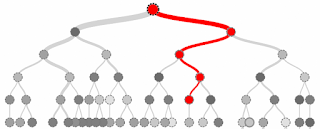Redux sub-reducer pattern for complex / nested data structures

I love the idea of the Redux pattern, the way all reducers are pure and predictable. I love the way they are effectively listeners that act on event notifications received from a central dispatcher, and I really like the way the whole approach simplifies the application and makes code in my Angular app's components only concerned with view related concerns rather than business logic. However, what I am not a big fan of is the normalised data approach. I've seen it recommended so many times for use with the Redux approach. You essentially have any object (read "row from table on server") in memory once and then everywhere else you hold a reference to the locally stored record/object by its unique ID. So, a view state you receive that looks like this [ { "id": "Emp1024", "name": "Peter Morris", "address": { "id": "123", "street": "xxx" } }, { "id": "Emp4096...
